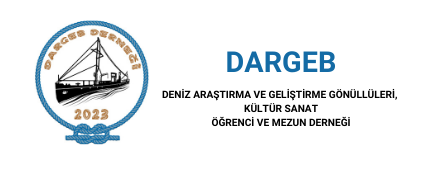In a world where change outpaces certainty, decision-making is less about predicting the future and more about navigating uncertainty with clarity and intention. This article extends the core theme of how risk and reward shape choices, deepening our understanding through psychology, strategy, and real-world application — all rooted in the foundational insight that wise decisions arise not from eliminating doubt, but from mastering it.
The Psychology of Uncertainty in Everyday Choices
Cognitive biases subtly distort how we perceive risk, especially under ambiguity. The availability heuristic leads us to overestimate risks tied to vivid or recent events—like fearing plane crashes after a highly publicized crash—while underestimating steady but less sensational dangers, such as smoking-related health issues. Equally influential is loss aversion, where the pain of losing $100 feels twice as powerful as the joy of gaining $100, often prompting risk-averse choices that limit long-term reward.
Emotional resilience acts as a crucial buffer, enabling individuals to pause, reflect, and avoid impulsive reactions. Research from the Journal of Behavioral Decision Making shows that people trained in mindfulness exhibit lower stress responses during uncertain choices, leading to more balanced outcomes. Framing also plays a pivotal role—choices presented as “90% survival” inspire confidence more than “10% mortality,” even though both convey identical risk.
Dynamic Trade-offs: When Risk and Reward Shift in Real Time
The fluid nature of modern environments demands continuous recalibration of decision thresholds. Time horizons—whether short-term survival or long-term vision—dramatically alter what we deem acceptable risk. A startup founder, for example, might accept high volatility early on for exponential growth potential, whereas a retiree investing in equities may prioritize stability.
Scenario-based planning encourages proactive anticipation of volatile outcomes. By mapping multiple plausible futures—such as market downturns, regulatory shifts, or technological disruptions—decision-makers build cognitive agility. Cognitive flexibility, the ability to shift mental sets, becomes a core competency. A 2022 study in Harvard Business Review found that teams with high cognitive flexibility adapted 40% faster to unexpected changes than rigid counterparts.
Strategic Patience: Delaying Decisions Without Losing Momentum
Inaction is not always a failure—it can be a deliberate, calculated strategy. Waiting allows signals to emerge: a shift in consumer behavior, a competitor’s move, or internal data trends that clarify the next best move. The key is recognizing the threshold where delaying action becomes costlier than acting.
Signals to trigger decisive action include sustained data patterns, external validation (e.g., pilot success), or a critical window closing. For instance, a business may delay launching a product until market readiness aligns with supply chain capacity. Balancing the opportunity cost of waiting—potential first-mover gains—with the upside of premature action requires disciplined judgment.
Data-Driven Intuition: Blending Analytics with Experience
Effective decision-making today fuses data with intuition. Probabilistic reasoning—assessing likelihoods rather than certainties—grounds gut instincts in evidence. For instance, a doctor diagnosing a rare condition uses expert intuition informed by statistical prevalence and clinical patterns, not intuition alone.
Yet, data gaps remain inevitable. In emerging markets or uncharted industries, adaptive judgment steps in, using analogies and scenario modeling to fill uncertainties. Building dynamic mental models—like a portfolio that evolves with market feedback—ensures decisions remain relevant. As behavioral economist Daniel Kahneman notes, “Good decisions come from a mix of fast thinking and slow reasoning, not one without the other.”
Building Adaptive Decision Frameworks for Uncertain Futures
To thrive amid uncertainty, frameworks must be flexible yet robust. Designing criteria that accommodate shifting variables—such as revising investment thresholds based on inflation or adjusting project timelines with resource constraints—ensures decisions remain viable.
Stress-testing choices against multiple plausible futures—“best case,” “worst case,” “base case”—uncovers hidden risks and opportunities. A retail chain might simulate supply chain disruptions or changing consumer preferences to prepare responsive strategies.
Reinforcing feedback loops—learning from outcomes, revisiting assumptions—refines future judgment. This iterative approach, central to agile methodologies, transforms past choices into strategic fuel, aligning decisions more closely with evolving realities.
Return to the foundation: How Risk and Rewards Shape Decision-Making Today
| Insight Type | Example Application |
|---|---|
| Cognitive biases in investment choices | Avoid overconfidence after a winning streak by reviewing performance holistically |
| Time-sensitive risk recalibration | Adjust product launch timing based on competitor moves or consumer data shifts |
| Hybrid data-intuition decisions | Combine market analytics with sales intuition in new market entry |
| Adaptive frameworks in project management | Revise timelines and budgets using feedback from sprint reviews |
Conclusion: Making Wise Choices When Certainty Fades
Deciding under uncertainty is not about eliminating risk but mastering how we respond to it. By understanding our cognitive biases, adapting to shifting time horizons, blending data with experience, and building resilient frameworks, we transform ambiguity into opportunity. These tools—grounded in psychology, strategy, and real-world application—empower choices that are not only wise today but build lasting resilience for tomorrow.
> “The best decisions emerge not from certainty, but from disciplined awareness of the unknown.” — Adapted from modern decision science principles

